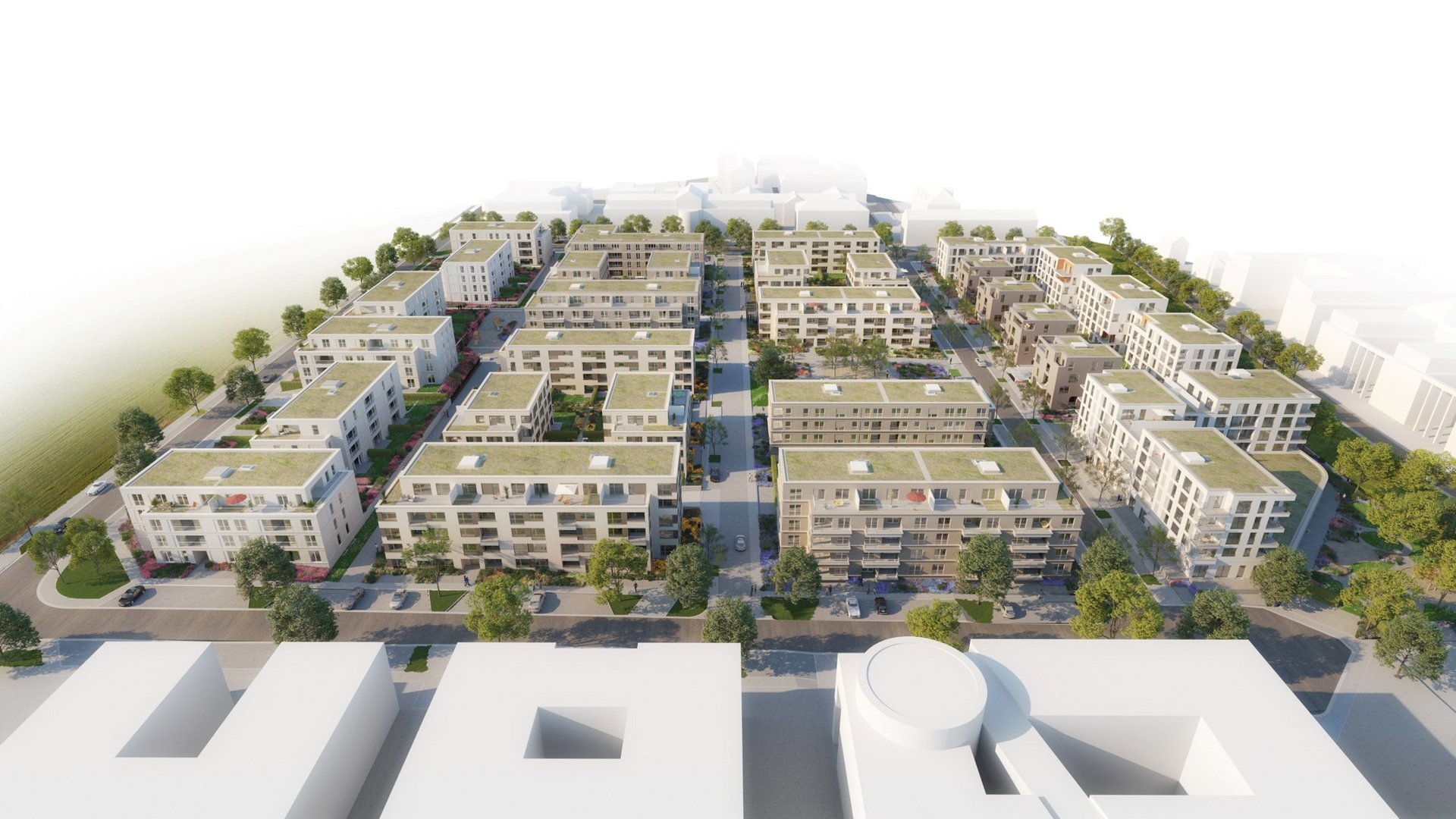
Building in partnership using the “pre-construction model”
Developing and building in partnership, Südcampus Bad Homburg
In Bad Homburg am Taunus, Implenia is realising the "Wohnquartier am Südcampus" project for the developer Wüstenrot Haus- und Städtebau (WHS). The job is being executed within a two-stage partnering process. Together with WHS we developed, planned and optimised the project together with the client from the very first phase.
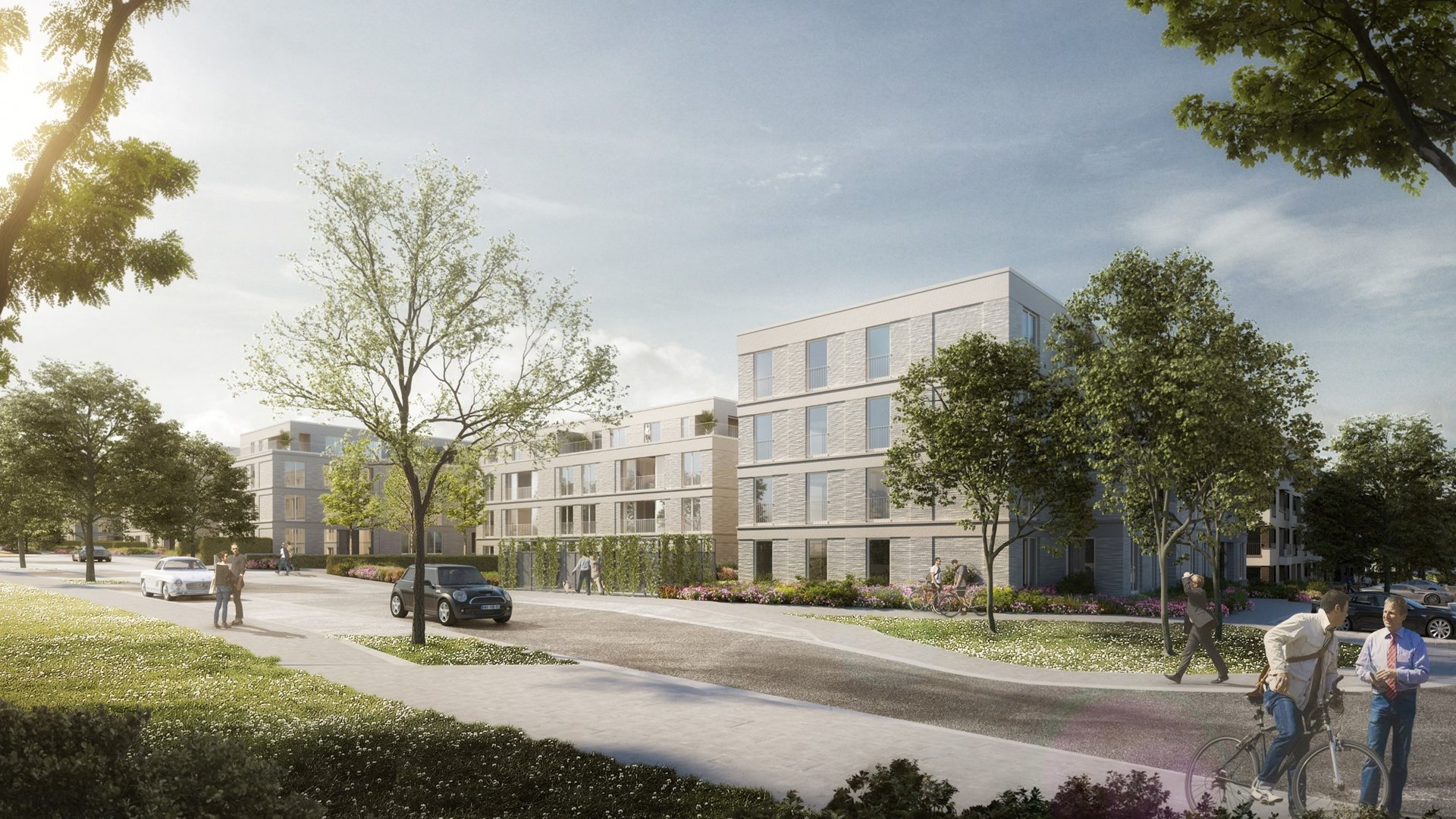
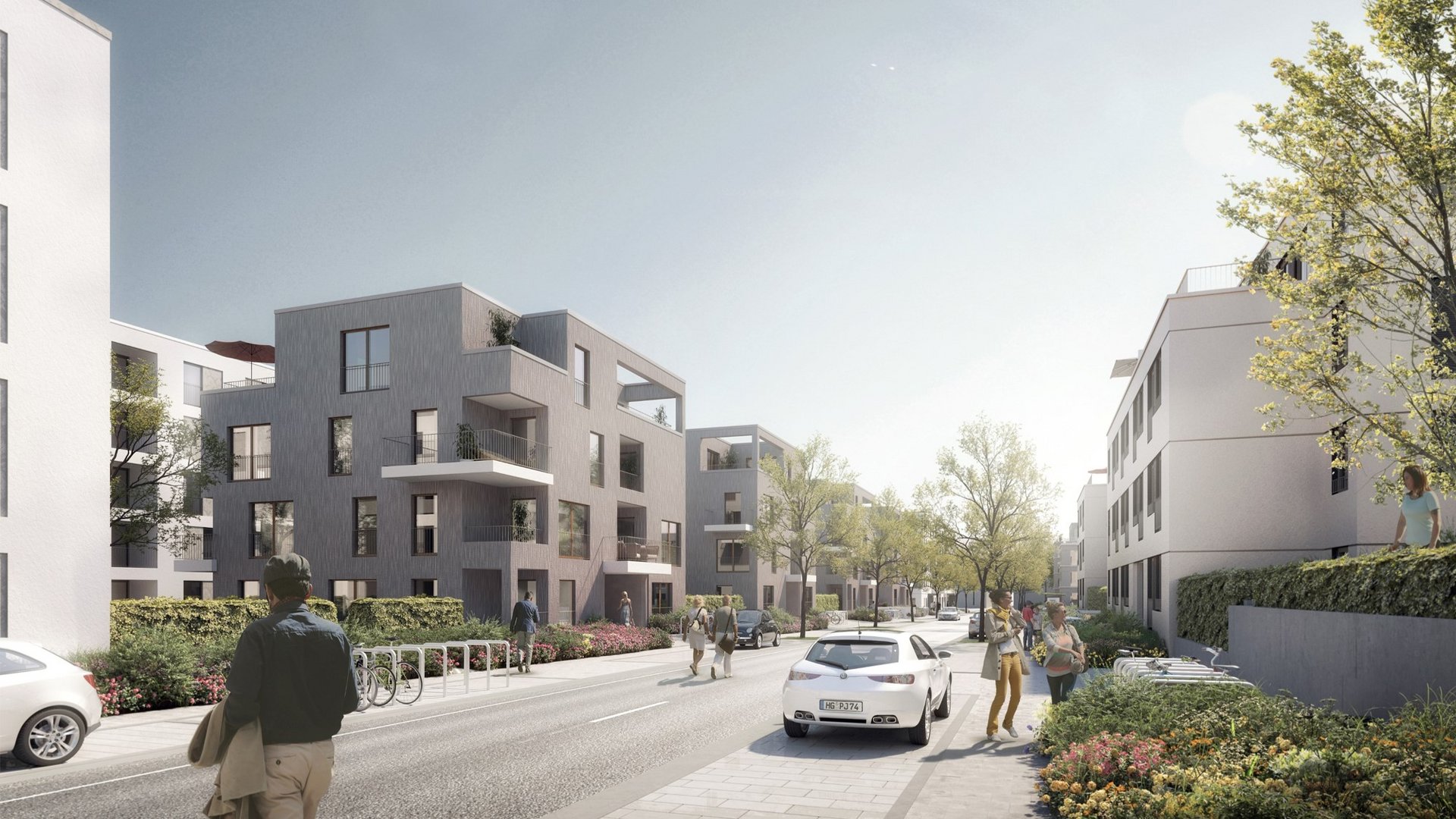
Facts & Figures
PROJECT DESCRIPTION
Implenia is planning and building the “Wohnquartier am Südcampus” in Bad Homburg am Taunus on a turnkey basis for Wüstenrot Haus- und Städtebau. The residential development near Frankfurt will have a gross floor area of approximately 80,000 m2. Over seven phases of construction we are creating 27 apartment blocks with 538 homes, seven underground car parks, a creche, outdoor areas and associated infrastructure.
Our construction management contract with the wholly-owned subsidiary of Wüstenrot & Württembergische Group is split into two phases: the pre-construction phase, which includes all the planning and approval steps up to the binding offer for construction; and then the construction phase, which includes all the detailed building designs and the actual building of this ambitious residential neighbourhood.
Service phases 1 to 4, as defined under the HOAI (Germany’s official fee scale for services provided by architects and builders), were handled by a jointly selected team of architects in Frankfurt. Our Major Projects branch took care of all the other specialist planning and design management, while our in-house engineering department in Leipzig helped with the structural engineering work.
Implenia has been working on planning and cost optimisation in the construction team since project development began. Building Information Modeling (BIM) and Lean Construction methods have been used to support processes in both the planning and construction phases.
41’000
m² site
27
apartment blocks
537
homes
38
months total construction time
131
million EUR contract value
Partnering model creates trust
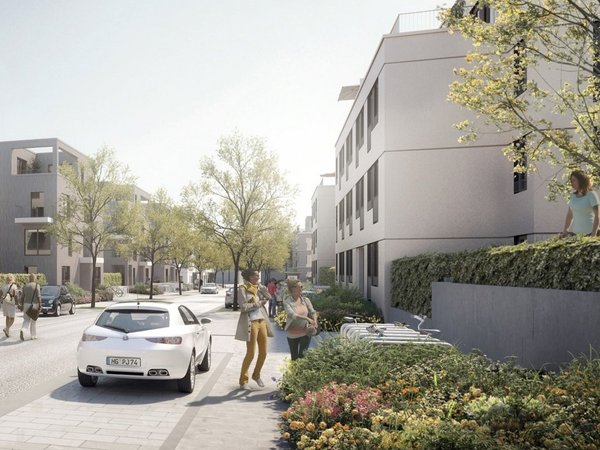
The construction management contract between Implenia and WHS includes all the planning stages requiring specialist planners. This is not the first time WHS has used the partnering process on a project. As a client, it is well aware of the advantages, especially for large, complex projects, so a two-stage process was already envisaged at the tendering stage. Wüstenrot explored the possibility of a partnership with several general contractors before deciding to go with Implenia.
The experienced team at the Major Projects branch of Implenia Hochbau impressed Wüstenrot with its clearly structured, tried-and-tested partnering model. Subsequent contract negotiations led to the signing of a two-stage contract with WHS in spring 2019. Phase 1, the pre-construction phase, includes the various planning and approval steps up to bid submission, while phase 2 covers detailed building design and the actual construction work.
PRE-CONSTRUCTION WORK: FOUNDATION FOR SUCCESSFUL IMPLEMENTATION
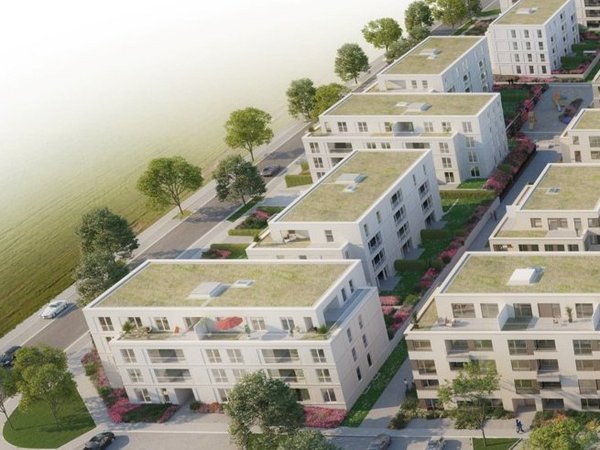
Following successful completion of the pre-construction phase, and having achieved the agreed planning targets, Implenia was then awarded the contract for actual construction in summer 2020. This was an important milestone and a reward for the dedicated team of experts from various specialist areas that had worked with WHS in phase 1 to get the project in the best possible state for implementation. Optimisation and planning ideas had, for example, already been generated by the internal value engineering and structural design work conducted in the early phase of the project.
Experienced design managers ensured proper control of the planning process and external planning teams. Responsibility for coordinating all the different parties fell to the Major Projects team, which has many years of experience with multi-stage processes and with proactive control of construction management contracts. The latest BIM and Lean Construction methods were used right from the start, providing a vital common platform for collaboration between everyone involved.
TIME IS THE DECISIVE FACTOR
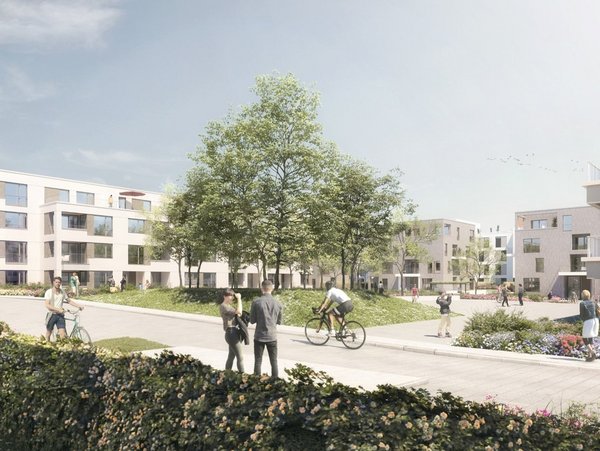
Over the course of a project, but especially in the early stages, a partnering model offers many levers to help manage and implement the project reliably – in terms of timings, cost and quality. The main secret to applying these levers effectively is simple enough: ensuring you allow enough preparation time. It is vital to spend time in advance getting to know each other, developing good communications and forging a positive relationship with the client, architects and planners in the core team. Everyone should acknowledge and understand each other’s interests; common goals and processes should be defined, and expectations and roles should be clarified before embarking on concrete planning. As well as goodwill from all sides, partnering depends on trust, time, and a lot of discussion.
Regular workshops with the right experts, active coordination with the client in planning meetings as well as the early involvement of an experienced operational construction team and calculation department made the actual construction, which is happening now, easier. Given the complexity of the job – a very diverse mix of homes in a new urban neighbourhood that has to be properly integrated into and connected with the existing surrounds – this is no mean feat. A collaborative approach, mutual respect and a clear focus on a common goal were vital here.
Sustainability
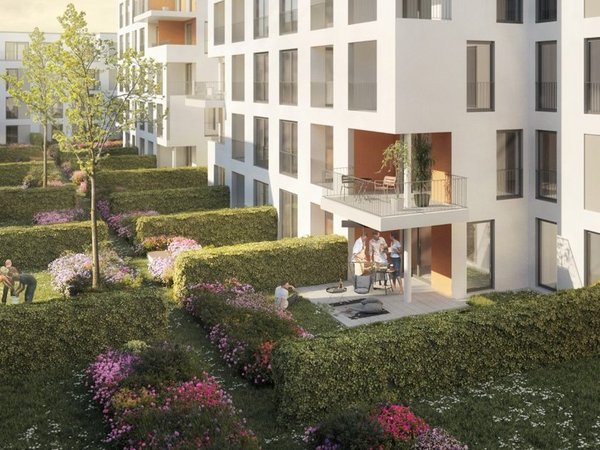
The project is being executed to the KfW55 standard. Implenia was charged with planning the execution of the project, which is heavily focused on creating energy-efficient building shells. This involves thermal insulation of external walls, basement ceilings and roof areas, as well as a careful choice of window elements.
Challenges
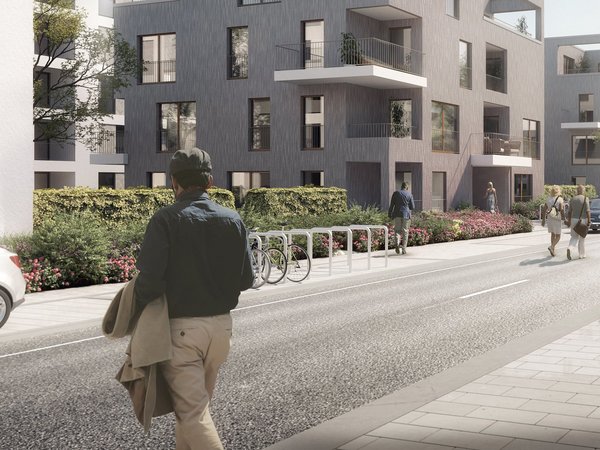
Owing to the complexity of the project, it is being realised in seven phases of construction and handed over to WHS in two stages. The planning and execution has to be structured in such a way that the first tranche is ready for use even as construction continues on the second. Another aspect is that Implenia is not only responsible for the apartment buildings, but also for building the two roads, two squares, public access routes, generous outdoor space and playgrounds that help integrate Südcampus to the surrounding townscape.
Marc Bosch
Managing Director Wüstenrot Haus- und Städtebau GmbH

Other top projects
Semi-Annual Report 2021
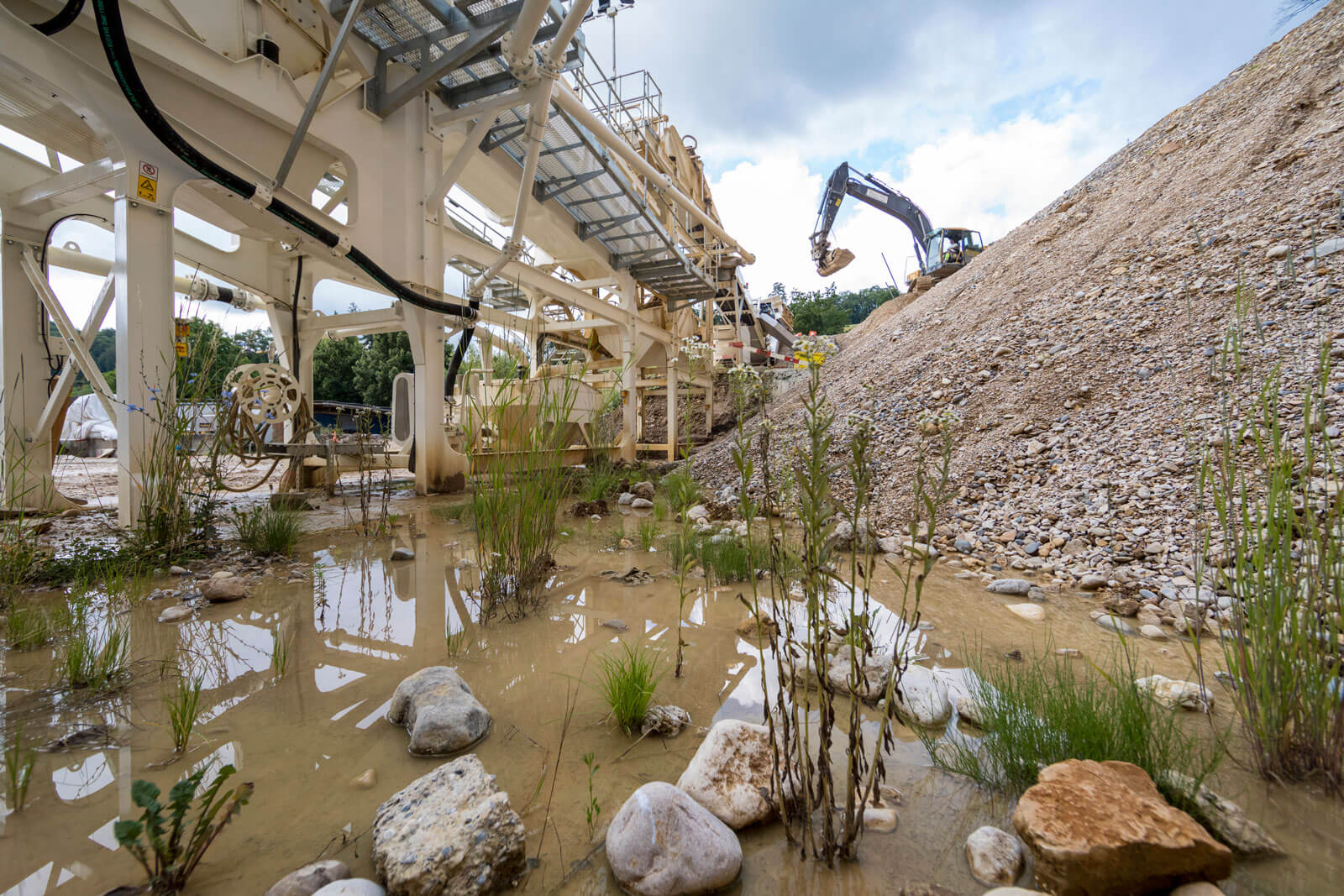
Circular economy, Waldenburgerbahn Basel
The “Waldeburgerli”, Switzerland’s narrowest-gauge railway, is being widened as part of a general refurbishment of the line, which runs through the Waldenburg valley. This project is notable for its complexity, but also for its regional approach to creating a closed material cycle.
Read more
Developing and building in partnership, Südcampus Bad Homburg
In Bad Homburg am Taunus, Implenia is realising the "Wohnquartier am Südcampus" project for the developer Wüstenrot Haus- und Städtebau (WHS). The job is being executed within a two-stage partnering process. Together with WHS we developed, planned and optimised the project together with the client from the very first phase.
Read more
Integrated Project Delivery, Schaffhauserstrasse Zurich
Implenia wants to promote new partnership models for greater transparency and efficiency, and is launching pilot projects that use Integrated Project Delivery (IPD). A new project to build a multi-family dwelling on Schaffhauserstrasse in Zurich is just getting under way.
Read more
Sustainable construction site logistics, Arnulfpost Munich
Sustainability has to be planned properly – and optimised construction logistics plays an important role. But can construction logistics really help us achieve a successfully sustainable future? The “Arnulfpost” project in Munich shows how Implenia approaches this highly complex task.
Read more
